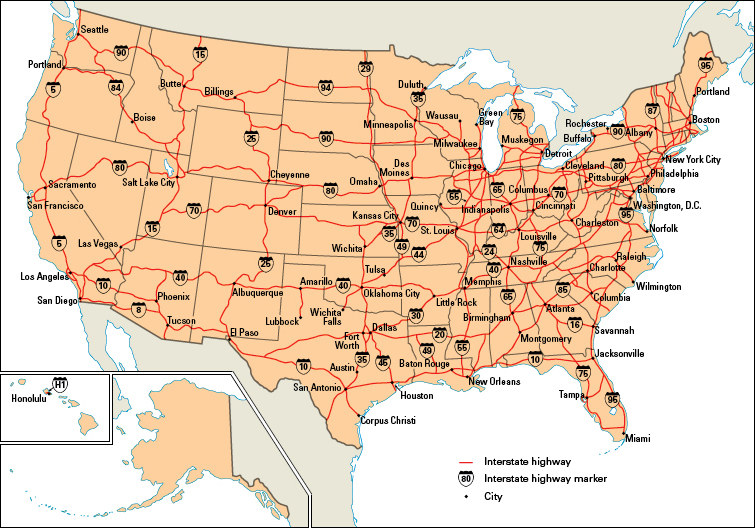Interstate Highway System is the network of federal highways that stretches across the United States. Most of the work on the system began after Congress passed the Federal-Aid Highway Act of 1956. Today, the system covers about 47,000 miles (75,600 kilometers). It is the largest public works project in U.S. history.

The U.S. government has helped states build and improve the nation’s highways since 1916. Beginning in 1944, Congress passed several acts promoting a national highway system. In the 1950’s, President Dwight D. Eisenhower believed a national highway project would strengthen the economy and improve military readiness.
On June 29, 1956, Eisenhower signed the Federal-Aid Highway Act. The act authorized the construction of more than 40,000 miles (64,400 kilometers) of highways. Under the program, the federal government paid 90 percent of the costs, and the states paid 10 percent. Federal funds to build and maintain the highways were distributed directly to the states. The system cost about $120 billion over a period of about 40 years.
In 1990, President George H. W. Bush signed legislation to officially designate the system the Dwight D. Eisenhower National System of Interstate and Defense Highways. In 1995, the interstate system became part of the newly created National Highway System (NHS). The NHS includes many important roadways other than interstate highways.
